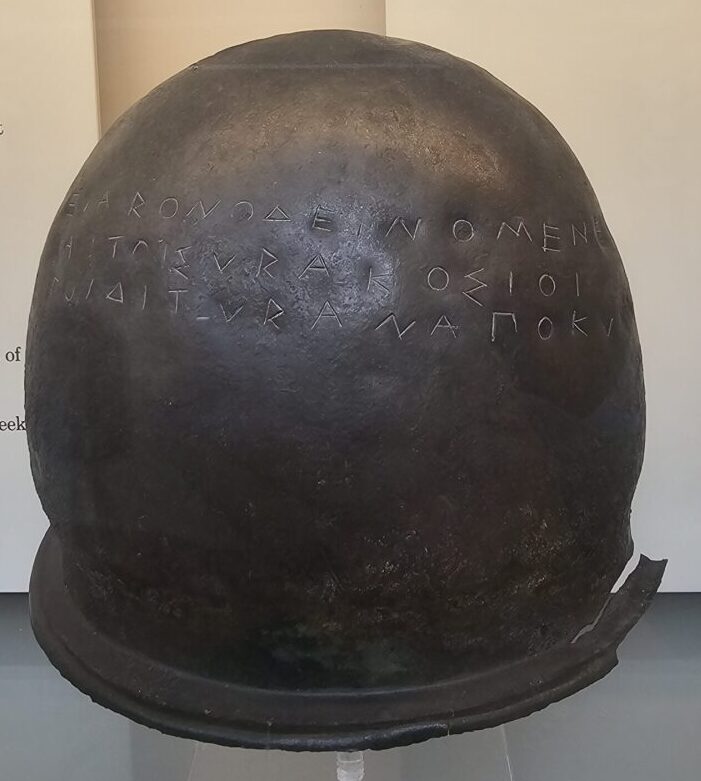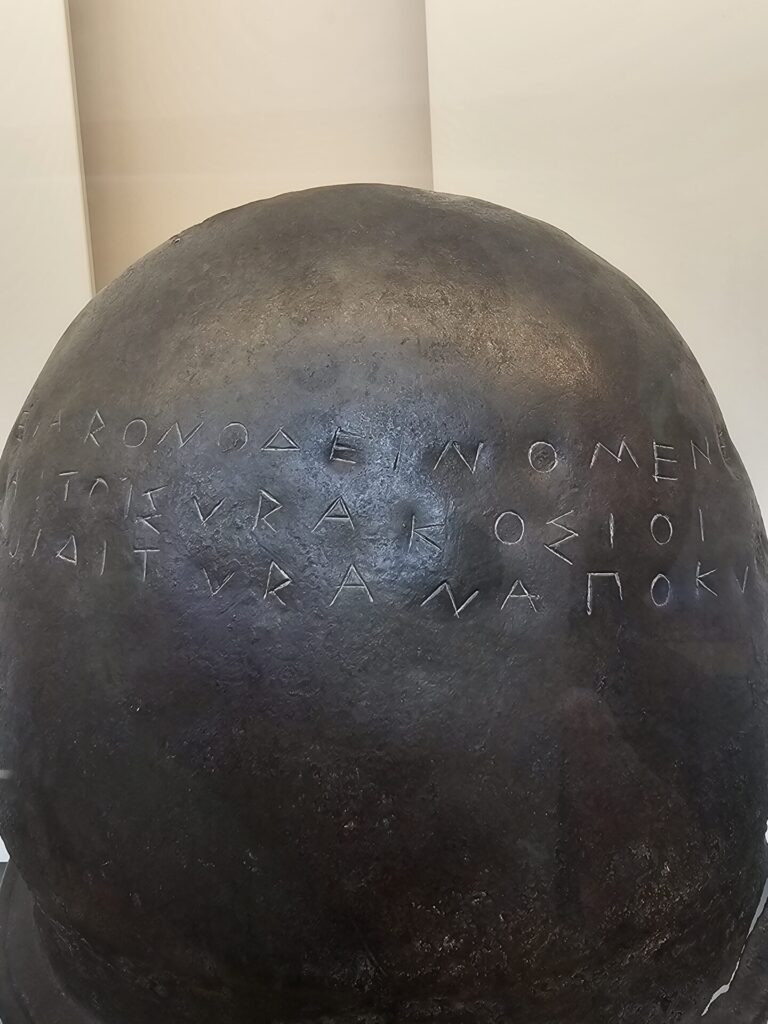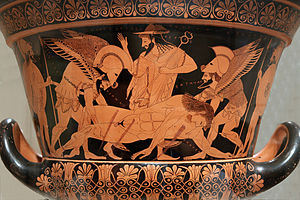Sometimes an object give us an insight into the past which isn’t initially obvious and here is one such example. The helmet below is a bronze Etruscan one, it dates to circa 500 BC and is doubtless a fascinating object purely on this basis alone.

However, as you can see there’s an inscription on the helmet which tells us a great deal.
An Etruscan defeat.
The inscription is in Greek and reads:
‘Hieron, son of Deinomenes, and the Syracusans [dedicated] to Zeus Etruscan [spoils] from Cumae’
Given the name of the person dedicating it and the reference to Cumae it’s been argued that this helmet was from the Battle of Cumae in 474 BC. This was a naval battle between Syracuse and the Etruscans with Syracuse winning. At the time the ruler of Syracuse was Hieron and it is supposed that this was the same Hieron mentioned in the inscription. The idea of dedicating items from a battle by the victors wasn’t a new thing. It was common. In the instance of land battles a trophy was often put up near where the battle had taken place, but objects from it could also be dedicated elsewhere. The ‘battlefield’ placement for a trophy is obviously lacking where it was a naval engagement. However, where the helmet was found makes this even more interesting.
Propoganda across the sea.
According to the musem entry the helmet was found at Olympia in central Greece. This was home to the Olympic games, somewhere which was a cultural and political epicentre in ancient Greece. It was always an ideal location for an object with a message – for example the Nike of Paionios.
What Hiero was doing was ensuring that his achievement was fully recognised by as many people as possible. Not in the form of a story or anecdote – but an actual object from the battle itself. What this also points to is how there was a wide network of cultural interactions within the ancient Greek world, these were much more mobile than sometimes we realise.



